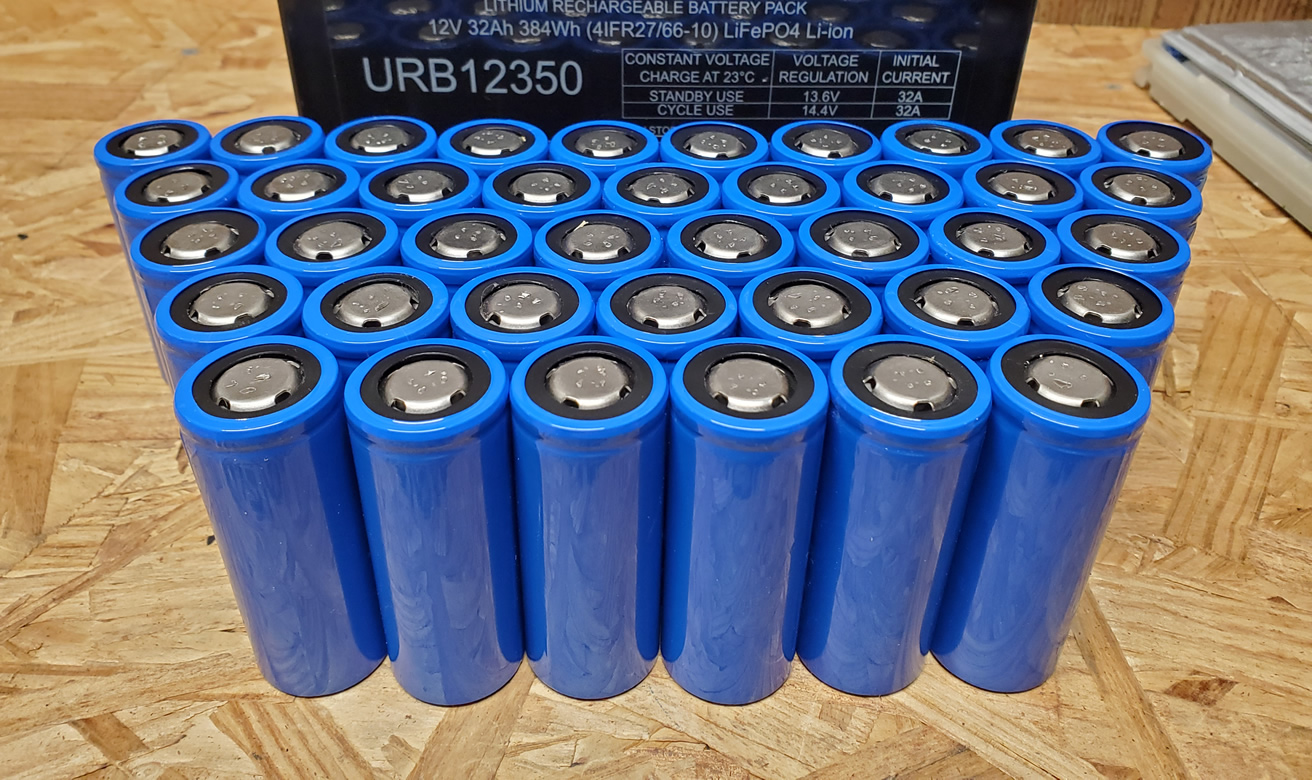spinningmagnets
100 TW
Once the copper/nickel sandwich method was discovered and verified, I can no longer support the option of soldering.
A soldered connection can easily have better electrical characteristics than a welded one
a soldered connection can be electrically stronger than a welded connection


I'm not sure why I'm wasting my breath. Your mind is made up, but......
I appreciate your quotes. You keep talking about lost capacity and damaging a cell but have shown us nothing quantitative. I'm a contributor at Second Life Storage where all they do is batteries. You may want to gain some knowledge browsing their forums. A good start is the link below where tests cannot determine any loss of capacity from soldering. Personally I have a couple of test cells I've soldered tabs to and un-soldered them 5 times. One cell tests a few mah higher than before the solderings and the other tests a few lower (original was 2188 before soldering and 2171 after 5 solder procedures). I've got one 18650 that tested 3385 mah (Tesla cell) and after soldering in and out of a few projects measures 3518 mah but I'm not convinced my measurements were equal as I'm not sure which of my capacity testers I used for testing it.

Experiment: Soldering 18650 = Capacity Fade?
Hey, guys, I did a test to find out if soldering 18650 cells leads to a loss of capacity or not. I tested 4 cells and used the following procedure: 1. Each cell measured 4x (capacity). So 16 tests overall 2. 2x soldered, (one solder point)and then again soldereda piece of virtual wire. 3. let it...secondlifestorage.com
In turn, I've had two MRIs. The hospital questionnaire on the first asked if I had ever (even once) resistance welded. The second specifically asked if I had ever "spot-welded". Where I worked it was part of safety training to be sure all our welders knew x-rays were required before any MRI. (Worker safety is huge in the US.) We not only did spot welding but MIG, TIG and sub-arc welding and it is the spot welders that cause the most problems for MRIs.
I hope you can become a bit more open minded.
Looks good technique. i'm guessing you are using leaded solder it because its melting so easily. I solder the copper strips so the heat transfers easier when attaching the strips to the cells and I have to spend less time melting the solder.In reply to the OP, I tend to use a small tip but then again I'm not soldering copper.....

7.61 MB file on MEGA
mega.nz
Look, it is nice that you are trying but we already had discussions like these 10 years ago, and nothing will chance the facts and knowledge we have on this forum, and soldering to the cells will always be a flawed method, nothing will ever change that. You can either accept it as a fact or not, but please don't suggest to anyone else that it is ok. There is too much money involved in this hobby and too much at stake (safety, house fires etc) so it will never be worth it to risk with soldering, especially now that spot welding is so available.
Yeah indium is another storyI have soldered a new cell group into a 4S battery pack using pure indium as the solder, melting point 300F. It continued to work well for years afterwards and might still be in service as far as I know. Indium is quite expensive, but it's easy to use as solder.
I would not recommend using normal 60/40 or 63/37 solder directly on cells of any kind.
OK, but you are an expection being a proficient, skillful, knowledgeable builder when it comes to soldering 18650 cells. So, soldering 18650/21700 cells (say 150w iron with 3/16 tip for 1 sec.) is still an alternate option as evident by all the instructional youtube soldering videos.I have soldered a new cell group into a 4S battery pack using pure indium as the solder, melting point 300F. It continued to work well for years afterwards and might still be in service as far as I know. Indium is quite expensive, but it's easy to use as solder.
I would not recommend using normal 60/40 or 63/37 solder directly on cells of any kind.
Short term yeah. Btw are you aware of how the positive terminal is connected to the can (negative terminal)? Check it out and you will see why heating it up might not be the best idea.I did some testing and it seems like soldering does not damage the cell at least on short term. I did two capacity tests before soldering and two tests after soldering.
Before soldering 2959mAh and 2948mAh
After soldering 2970mAh and 2950mAh
